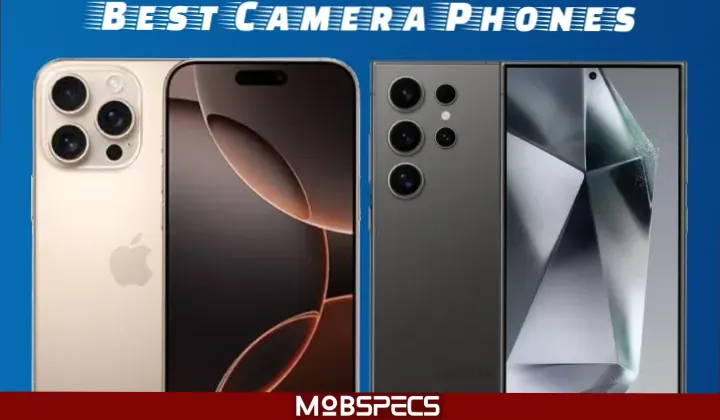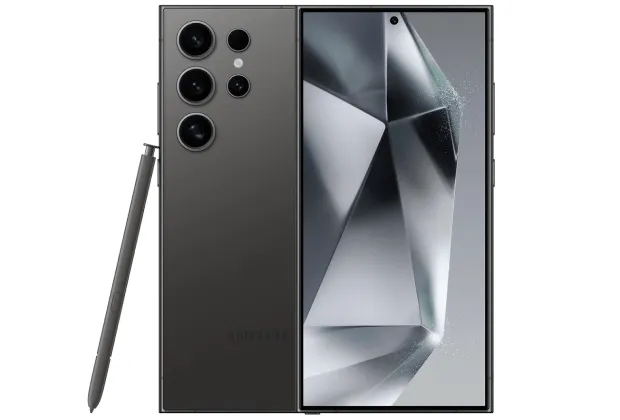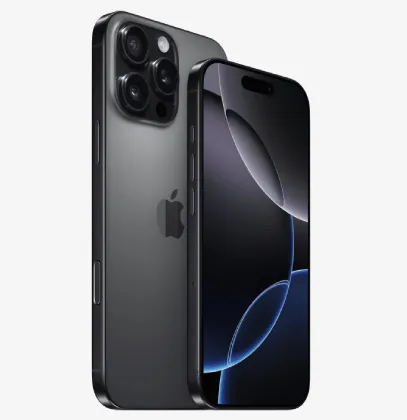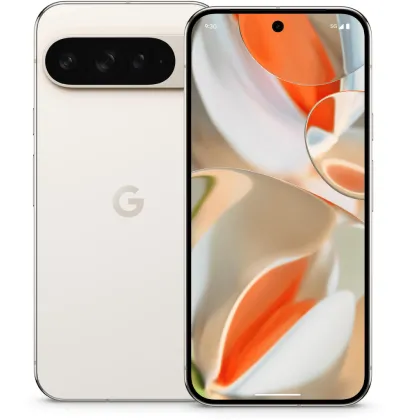
Finding the Perfect Camera Phone: It’s Personal
The ideal camera phone is subjective and depends entirely on your photography needs and preferences. Are you seeking a versatile point-and-shoot experience, a top-tier video recorder for social media, or a device that excels at capturing mouthwatering food photos?
The iPhone 16 Pro, Galaxy S24 Ultra, and Pixel 9 Pro all stand out as exceptional camera phones, but each possesses unique strengths.
As a seasoned reviewer, I constantly carry and test these top contenders, capturing images for both work and personal enjoyment. This hands-on experience allows me to offer informed and reliable recommendations.
For the most well-rounded camera experience, the iPhone 16 Pro or Pro Max are excellent choices. However, if culinary photography is your passion, the Galaxy S24 Ultra excels at making food look incredibly appetizing with minimal effort.
Significant changes to this list are unlikely until early next year. The arrival of Snapdragon 8 Elite-powered devices like the OnePlus 13 (already available in China) and the anticipated (and potentially revolutionary) Samsung Galaxy S25 Ultra will reshape the landscape.
In the meantime, explore our photo samples and embark on your journey to discover the perfect camera phone for your unique style.
Key Changes:
- More concise and engaging language.
- Focus on the personalized nature of camera phone selection.
- Clearer emphasis on the reviewer’s expertise and testing process.
- Simplified explanation of upcoming changes.
- Removed unnecessary phrases and streamlined the overall flow.
Best Camera Phones of 2025
Here’s a comparison chart of the 10 best camera phones of 2025, ranked by their camera capabilities. It highlights each phone’s key specifications, standout features, and unique offerings—perfect for a quick overview.
| Rank | Phone | Key Camera Specs | Notable Features |
| 1 | Samsung Galaxy S24 Ultra | – 200MP main sensor (quad-lens setup) | – Advanced AI for improved low-light & color accuracy |
| – 10MP telephoto + 50MP periscope zoom | – Enhanced stabilization & night mode | ||
| – 8K@30fps video | – User-friendly pro and auto modes | ||
| 2 | Apple iPhone 16 Pro / Pro Max | – 48MP main camera (triple-lens) | – A18 Bionic chip powering AI-driven photography |
| – Cinematic video up to 8K | – ProRAW & ProRes support | ||
| – Larger sensor in Pro Max | – Improved LiDAR for faster autofocus & AR | ||
| 3 | Xiaomi 14 Ultra | – Quad-camera system co-engineered with Leica | – Advanced AI for real-time image optimization |
| – 1-inch main sensor | – Manual camera controls for enthusiasts | ||
| – 8K video + RAW mode | – Leica-tuned color science | ||
| 4 | Google Pixel 9 Pro | – Triple camera setup: 50MP main, 48MP ultra-wide, 48MP telephoto | – Google AI for image & video enhancements |
| – Signature low-light (Night Sight) | – Long battery life & regular software updates | ||
| 5 | Vivo X100 Pro (or Ultra) | – ZEISS-backed triple-camera system | – Exceptional portrait & low-light performance |
| – Large main sensor + telephoto for high-quality zoom | – Advanced night mode & AI algorithms | ||
| – Gimbal OIS | – ZEISS color accuracy | ||
| 6 | OPPO Find X8 Pro | – Competitive ultra-wide & zoom performance | – Vibrant color reproduction |
| – Likely quad-camera setup | – Stands out in battery life | ||
| – 8K HDR video | – Outperforms some rivals (e.g., Pixel 9 Pro XL) in tests | ||
| 7 | OnePlus 13 | – Triple-camera system (high-res main + ultra-wide + telephoto lenses expected) | – Fast charging & large battery |
| – Rumored Snapdragon 8 Elite | – OxygenOS 15 with upgraded AI photography | ||
| – Flat display (rumored) | |||
| 8 | iQOO 13 5G | – Triple 50MP sensors | – Strong night mode & AI enhancements |
| – Snapdragon 8 Elite processor | – Targets gamers & photographers | ||
| – 32MP selfie camera | – Competitive pricing | ||
| 9 | Samsung Galaxy S24 Plus | – Triple-lens: 50MP main, 12MP ultra-wide, 10MP telephoto | – AI-driven image processing |
| – Enhanced Nightography | – 4K+ stabilization for smooth video | ||
| – 6.7″ Dynamic AMOLED 120Hz display | |||
| 10 | Asus Zenfone 10 | – Dual-camera system: 50MP main (gimbal OIS) + 13MP ultra-wide | – Compact form factor |
| – 5.9″ AMOLED, 144Hz refresh rate | – Snapdragon 8 Gen 2 with up to 16GB RAM | ||
| – 4300mAh battery with 30W fast & 15W wireless charging |
Quick Highlights
- Samsung Galaxy S24 Ultra: Leads the pack with a 200MP sensor, exceptional zoom capabilities, and cutting-edge AI enhancements.
- iPhone 16 Pro/Pro Max: Elevates computational photography with the A18 chip, offering 8K video and refined image processing.
- Xiaomi 14 Ultra: Combines a Leica partnership and a 1-inch sensor for professional-grade photography.
- Google Pixel 9 Pro: Excels in AI-driven and low-light photography, continuing Google’s legacy of camera innovation.
- Vivo X100 Pro/Ultra: Impresses with ZEISS optics, gimbal stabilization, and outstanding portrait capabilities.
- OPPO Find X8 Pro: Competes strongly with superior ultrawide and zoom video performance.
- OnePlus 13: Promises flagship-level photography paired with OxygenOS upgrades.
- iQOO 13 5G: Offers triple 50MP cameras, flagship performance, and competitive pricing.
- Samsung Galaxy S24 Plus: Provides a balanced flagship experience at a more accessible price than the Ultra.
- Asus Zenfone 10: Targets users who prefer compact phones with premium performance and robust cameras.
Use the comparison table to quickly assess the unique features and strengths of these top-tier devices, making it easier to choose the ideal option for your 2025 mobile photography needs.
1. Samsung Galaxy S24 Ultra
The Samsung Galaxy S24 Ultra claims the spotlight as one of best camera phones of 2024-25. Its 200MP main sensor captures photos with extraordinary detail and clarity.

This flagship boasts a versatile quad-lens setup, including a 10MP telephoto lens and a 50MP periscope zoom lens for impressive long-range photography.
AI-driven features enhance its imaging capabilities, delivering superior low-light performance and accurate color reproduction.
For video enthusiasts, the S24 Ultra offers 8K recording at 30fps with enhanced stabilization, ensuring smooth and professional-quality footage.
The camera interface is intuitive, featuring automatic and pro modes to accommodate both beginners and seasoned photographers.
Night mode is a standout, producing brighter, sharper images with reduced noise thanks to its larger sensor and AI optimizations.
The front-facing camera is equally impressive, providing high-resolution selfies with AI beautification for a polished look.
With its fusion of advanced hardware and intelligent software, the Galaxy S24 Ultra redefines mobile photography, setting a benchmark for the industry.
2. Apple iPhone 16 Pro/Pro Max
Apple’s iPhone 16 Pro and Pro Max bring transformative updates to mobile photography and this is the best camera phones. A new 48MP main sensor offers enhanced low-light performance and sharper image processing.
The Pro Max stands out with a larger sensor and advanced stabilization, ensuring stunning photos in any setting. Both models feature a versatile triple-lens system with ultra-wide and telephoto options.

Apple’s A18 Bionic chip powers revolutionary AI-driven photography features, delivering improved image quality and creative control.
Video recording capabilities have also been upgraded, with support for 8K video and improved stabilization for smoother, more cinematic footage.
The Pro Max’s larger display is ideal for reviewing and editing photos, while improved battery life ensures longer shooting sessions.
Portrait photography shines with better depth mapping and natural bokeh effects, while the upgraded LiDAR scanner enhances autofocus and AR functionality.
For those seeking unmatched performance in mobile imaging, the iPhone 16 Pro and Pro Max deliver a premium combination of hardware and software excellence.
3. Xiaomi 14 Ultra
The Xiaomi 14 Ultra establishes itself as a leading contender in the realme of best camera phones for 2025, building upon the success of the Xiaomi 13 Ultra with substantial upgrades to its advanced camera system.
Continuing its collaboration with Leica, Xiaomi integrates the expertise of the renowned camera brand into a quad-camera setup, delivering exceptional performance across diverse shooting scenarios.
At the core of its imaging capabilities is a large 1-inch main sensor, which excels in capturing intricate details and performing admirably in low-light conditions. Complementing the primary camera are versatile wide-angle and telephoto lenses, enabling a variety of photographic styles.
Xiaomi enhances computational photography with advanced AI algorithms, ensuring real-time optimization of images for greater color accuracy and dynamic range.
The Xiaomi 14 Ultra introduces professional-grade features tailored to photography enthusiasts, such as RAW image capture, manual controls, and an upgraded camera interface for a more intuitive user experience.
On the video front, the device supports 8K recording with improved stabilization, making it an excellent option for content creators seeking high-quality footage.
With state-of-the-art camera technology and Leica-tuned optics, the Xiaomi 14 Ultra continues to raise the bar for smartphone photography, setting new standards in 2025.
4. Google Pixel 9 Pro
The Google Pixel 9 Pro remains a standout choice in the 2025 smartphone market, featuring a powerful triple-camera system with a 50MP main sensor, a 48MP ultra-wide lens, and a 48MP telephoto lens. This is one of the best camers phones.
True to its legacy, the Pixel 9 Pro excels in low-light photography, leveraging Google’s cutting-edge computational photography technology to produce stunning results in challenging lighting conditions.

Its 6.7-inch display offers ample screen space for viewing and editing photos, ensuring a seamless experience for photography enthusiasts. AI-powered features simplify capturing and enhancing images, making high-quality results accessible to all users.
Battery life sees notable improvement, addressing feedback from earlier models. The Pixel 9 Pro now delivers reliable, all-day performance even with heavy use.
Google’s commitment to software excellence ensures the device remains up-to-date with regular Android updates and security patches, providing longevity and added value for users.
Priced competitively at approximately ₹1,09,999, the Pixel 9 Pro offers a compelling package of camera expertise, software optimization, and overall performance, making it an ideal choice for those passionate about mobile photography.
5. Vivo X100 Pro (or Ultra)
The Vivo X100 Pro cements its place as one of the best camera phones of 2025, featuring a ZEISS-enhanced triple-camera system that excels in portrait photography and zoom performance. This is the best camera phones in 2024-25.
Equipped with a large main sensor, the X100 Pro delivers excellent low-light performance. Its telephoto lens ensures high-quality zoom shots, competing with dedicated cameras.
A standout feature is the gimbal stabilization, which guarantees smooth, shake-free videos, even when shooting on the move.
Vivo’s partnership with ZEISS further enhances the optical quality, ensuring sharp, color-accurate images across various scenarios.
The night mode impresses with its ability to produce clear and detailed photos in dark conditions, leveraging AI algorithms to minimize noise and maintain vibrant colors.
Selfie enthusiasts will appreciate the high-resolution front camera, which captures natural skin tones and includes portrait mode effects for professional-quality shots.
With intuitive controls and creative camera modes, the X100 Pro caters to both casual users and advanced photographers, offering a versatile and powerful camera experience.
6. OPPO Find X8 Pro
The OPPO Find X8 Pro emerges as a top-tier option for 2025, rivaling flagship competitors like the iPhone 16 Pro Max and Samsung Galaxy S24 Ultra. This is one of the best camers phones.
It shines in ultrawide and zoom video performance, often surpassing other devices in these categories.
The Find X8 Pro produces vibrant, eye-catching colors, excelling in scenes with rich hues. Its ability to handle a wide range of lighting conditions makes it a versatile choice.
Battery life is another strong suit, adding to its appeal as a well-rounded flagship device.
Even amidst fierce competition, the OPPO Find X8 Pro remains a formidable option for photography enthusiasts in early 2025, thanks to its outstanding camera performance and overall capabilities.
7. OnePlus 13
The OnePlus 13 builds on the strengths of its predecessor, the OnePlus 12, aiming to deliver a flagship-level photography experience in 2025.v
Expected to feature a triple-camera system, the device may include a high-resolution main camera, an ultrawide shooter, and a telephoto lens, providing versatility for various photography styles. This is one of the best camers phones.
Rumored to be powered by the Snapdragon 8 Elite chip, the OnePlus 13 promises fast image processing and enhanced computational photography features.
A flat display design is anticipated, catering to users who prefer traditional screen shapes over curved edges.
Known for its fast-charging technology, OnePlus is likely to enhance both battery capacity and charging speeds in this model.
With expected software upgrades through OxygenOS 15, the OnePlus 13 could introduce new photography modes and AI enhancements, positioning itself as a strong competitor against leading flagship devices in 2025.
8. iQOO 13 5G
The iQOO 13 5G is set to disrupt the smartphone market in 2025, offering a compelling combination of performance and value.
It features a triple-camera setup, each with 50MP sensors, delivering versatile and high-quality photography. This is one of the best camers phones.
Powered by the Snapdragon 8 Elite processor, the device ensures fast image processing and smooth multitasking, making it ideal for photography and gaming enthusiasts.
The front-facing 32MP camera caters to high-resolution selfies and video calls.
Priced at ₹54,999, the iQOO 13 5G provides premium features at an accessible price, making it a strong contender among mid-range flagships.
Globally launched in December 2024, the iQOO 13 5G targets users seeking a balance of advanced camera capabilities and high-performance hardware.
9. Samsung Galaxy S24 Plus
The Samsung Galaxy S24 Plus offers an impressive camera experience for 2025, balancing flagship features with an approachable price.
Its triple-lens system includes a 50MP main camera, a 12MP ultrawide lens, and a 10MP telephoto lens with 3x optical zoom. This is one of the best camera phones in 2024-25.
Enhanced Nightography capabilities and AI-powered features improve low-light performance, delivering sharper and more detailed images.
The device boasts a 6.7-inch Dynamic AMOLED 2X display with a 120Hz refresh rate, providing a vivid and responsive screen for framing and reviewing photos.
Its video capabilities include high-resolution recording and advanced stabilization, making it an excellent choice for content creators.
While it doesn’t match the S24 Ultra’s camera system, the S24 Plus strikes a balance between performance and cost, appealing to photography enthusiasts who want flagship-level features at a slightly lower price point.
10. Asus Zenfone 10
The Asus Zenfone 10 stands out in 2025 as a compact yet powerful flagship smartphone.
Featuring a 5.9-inch AMOLED display with a 144Hz refresh rate, the Zenfone 10 offers smooth visuals in a pocket-friendly size.
Powered by the Snapdragon 8 Gen 2 processor, the device delivers top-tier performance for demanding tasks and gaming. With up to 16GB of RAM and 512GB of storage, it provides ample space for apps and media.
The dual-camera setup includes a 50MP main sensor with gimbal stabilization for steady, sharp shots, even in low-light conditions. A 13MP ultrawide lens adds versatility, catering to a range of shooting scenarios. This is the best camera phones in 2024-25.
Compact yet premium, the Asus Zenfone 10 is an excellent choice for users who prioritize portability without compromising on performance or camera quality.
Battery performance is commendable for its compact size, with a 4300mAh battery supporting 30W fast charging and 15W wireless charging. The Zenfone 10 runs on Android 13 with Asus’s ZenUI interface, delivering a clean, user-friendly, and customizable experience.
The combination of its compact design and robust specifications makes the Zenfone 10 an appealing choice for users seeking a high-performance phone in a smaller form factor. While its camera system may not lead the market, it offers reliable performance for everyday photography.
Camera Technology Innovations
Smartphone cameras in 2025 have reached new heights, with groundbreaking advancements in sensor technology and AI-powered features that are reshaping mobile photography and videography.
Sensor Advancements
Modern smartphone sensors in 2025 boast higher resolutions and enhanced light sensitivity. Many flagship devices now feature 200MP main sensors, capturing extraordinary detail. Through pixel binning, these sensors combine smaller pixels into larger ones, producing brighter, high-quality 12MP or 50MP images, especially in low-light conditions.
Larger sensor sizes—up to 1-inch in some models—enhance dynamic range and low-light performance by capturing more light. Stacked CMOS sensor designs improve readout speeds, minimizing rolling shutter effects during fast motion photography.
Some devices feature multiple main cameras with varying focal lengths, enabling seamless optical zoom without the need for bulky periscope lenses. This innovation offers versatility without compromising the phone’s slim design.
AI and Computational Photography
Artificial intelligence plays a transformative role in 2025 smartphone cameras, with advanced neural processing units (NPUs) driving real-time image enhancement and creative features.
Key AI-powered camera capabilities include:
- Intelligent scene recognition and optimization
- Multi-frame noise reduction for clearer images
- Real-time subject tracking for sharper focus
- Dynamic portrait lighting adjustments
- AI-augmented zoom combining optical and digital methods
Computational photography continues to evolve, merging multiple exposures to create HDR images with stunning dynamic range. Night modes are more advanced than ever, producing bright, detailed photos even in extremely low light.
AI also simplifies editing directly on smartphones, allowing users to effortlessly remove unwanted objects, swap backgrounds, or apply sophisticated filters with minimal effort.
Factors Influencing Camera Quality
The quality of smartphone cameras is shaped by several key factors that determine their performance and the resulting image quality.
Optical Zoom vs. Digital Zoom
Optical zoom uses the camera’s lens to magnify subjects without losing image quality. By physically adjusting the lens elements, it retains sharpness and clarity. Digital zoom, on the other hand, crops and enlarges part of the image, often compromising quality.
In 2025, many flagship phones integrate periscope lenses to enhance optical zoom capabilities. These lenses use prisms to reflect light, achieving extended zoom ranges while maintaining slim device profiles. Phones like the iPhone 16 Pro and Google Pixel 9 Pro offer up to 5x optical zoom.
Digital zoom relies on software to interpolate and enlarge images. While some devices use AI to enhance digitally zoomed photos, the results generally fall short of optical zoom in terms of sharpness and detail.
These advancements underscore the rapidly evolving landscape of smartphone cameras, setting new standards for both casual users and photography enthusiasts.
Low-Light Performance
Capturing detailed and vibrant images in dim conditions is a key benchmark for smartphone cameras in 2025. Improvements in sensor size, aperture, and computational photography continue to enhance low-light performance.
- Sensor Size: Larger sensors capture more light, improving clarity and detail in darker environments. For instance, the Xiaomi 14 Ultra features a 1-inch sensor, the largest available in smartphones as of 2025, delivering exceptional low-light results.
- Night Mode: AI-powered night modes utilize longer exposure times and multi-frame processing to brighten dark scenes while minimizing noise. Leading examples include Google’s Night Sight and Apple’s Night mode, both of which create stunning low-light images by combining multiple exposures.
- Wide Apertures: A wider aperture allows more light to reach the sensor, resulting in brighter images. The Samsung Galaxy S24 Ultra, with its f/1.4 aperture, excels in capturing well-lit and sharp photos even in challenging lighting conditions.